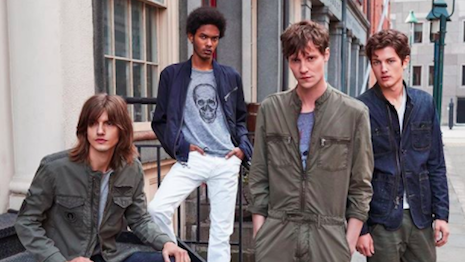- About
- Subscribe Now
- New York,
May 11, 2018

 Some luxury brands have already embraced omnichannel as their go-to strategy. Image credit: John Varvatos
Some luxury brands have already embraced omnichannel as their go-to strategy. Image credit: John Varvatos
Consumers today have mastered the art of seamlessly transitioning between online, offline and mobile shopping, and retailers must adapt to this new reality.
A new report from Criteo found that only 7 percent of consumers are omnichannel shoppers yet cross-channel shopping accounts for 27 percent of all sales. For retailers, adjusting to the way customers shop now, freely switching between shopping on their phones, online at home or in store is paramount to future success.
“Our latest study shows continuing shifts from desktop to mobile shopping, as well as from retailer Web sites to apps," said Jonathan Opdyke, chief strategy officer of Criteo, New York. "Today’s shopper is on-the-go and researching across multiple screens, requiring a cohesive, data-driven approach to intersect and influence buying decisions."
Omnichannel shopping
Continuing the trend from the last few years, desktop and tablet transactions are down while shopping over mobile has grown even more dominant as the primary method of online shopping.
Criteo found that mobile shopping grew 22.5 percent year-over-year while desktop and tablet fell yet again.
The majority of mobile shopping, 70 percent, is done through mobile applications. In-app purchases have grown at almost exactly the same rate as overall mobile shopping, 22 percent year-over-year.
Dior looks to omnichannel for future strategy. Image credit: Dior.
At the same time, omnichannel shopping is becoming a major trend for retailers of all sectors. Customers increasingly will research products on their desktops, view them in-store and compare prices on their phones while they shop.
This omnichannel shopping style is incredibly popular, particularly among tech-savvy young people.
Retailers need to understand the ways in which customers shop to best serve them. Criteo recommends a robust collection and analysis of data to help retailers understand how best to navigate this new omnichannel reality.
Following trends
Luxury brands and retailers have long recognized the potential for omnichannel and have responded in kind.
French couture house Christian Dior is investing into omnichannel retail and ecommerce growth with a new chief digital officer.
Jens Riewenherm is bringing his expertise to Dior, after having left his position as managing director of MyTheresa.com in October. The new digital officer’s inclusion should help the designer label become more accessible to its audience in a more modern method (see story).
Similarly, U.S. menswear label John Varvatos is bridging the gap between offline and online through a new platform as consumers look to mobile search for local products.
Estée Lauder's Lead Beauty Forward initiative has propelled its omnichannel growth. Image credit: Estée Lauder
Radius8, Inc. is partnering with the menswear brand to bring its local products to its ecommerce platform. Shoppers will be able to browse the John Varvatos items that are available at a store near them (see story).
These examples show how luxury retail has already embraced omnichannel philosophy. As Criteo’s report shows, this is now one of the most important tactics for retailers and brands alike.
As customers increasingly feel detached from traditional siloed channels of commerce, omnichannel provides the solution to keeping customers engaged with a retailer at every stop of the shopping process.
“For retailers with physical stores, app adoption and improved data infrastructure are opening new horizons in omnichannel marketing, with online and offline blending into a seamless and measurable shopping journey," Mr. Opdyke said.
Share your thoughts. Click here